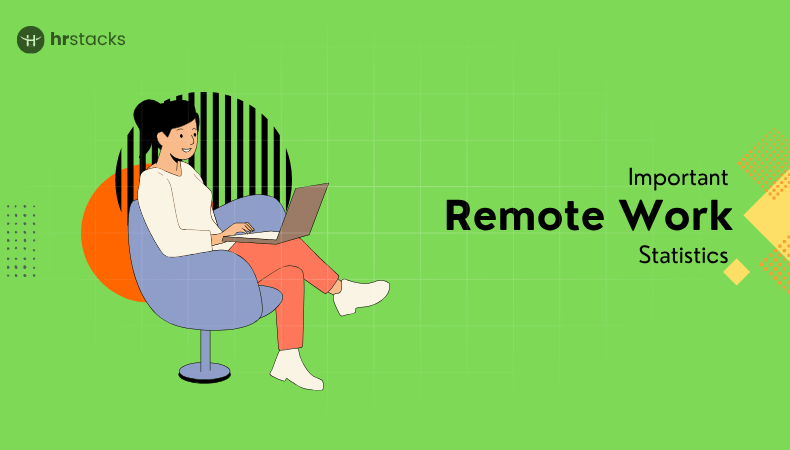When your team spans locations, time zones, and legal jurisdictions, keeping HR operations smooth becomes a real challenge. That’s where Employer‑of‑Record (EOR) platforms step in and EORs with solid Employee Self‑Service (ESS) tools recharge how employees interact with HR.
These platforms let people independently access payslips, manage benefits, submit leave, and update personal profiles, all from intuitive web or mobile interfaces.
This article examines five standout EOR platforms renowned for their ESS capabilities: Remote, Deel, Rippling, Oyster, and Remofirst.
Each comes with its strengths, from Remote’s in‑house global compliance network to Deel’s mobile‑friendly interface, Rippling’s seamless HR‑IT integration, Oyster’s transparent pricing, and Remofirst’s startup‑friendly speed and cost structure.
You’ll get insight into how these platforms handle onboarding, document access, payroll, time‑off, expenses, and more, so you can weigh their ESS strengths, limitations, and suitability for your organization’s scale and priorities.
By the end, you’ll have a clear guide to choosing the right EOR +ESS combination for empowering your workforce and easing HR workflows.
Recommendations At A Glance
These summary recommendations spotlight each platform’s unique strength in Employee Self‑Service, whether it’s global compliance, seamless usability, equitable hiring, tech integration, or value-driven onboarding.
Choose based on your organization’s scale, priorities, and desired ESS outcomes.
- Best Overall ESS + EOR: Remote. Robust ESS across the full HR lifecycle and strong global compliance.
- Best User Experience for Global Teams: Deel. Seamless UX, hybrid model support, and Slack/mobile integrations.
- Best Equity-focused: Oyster. Transparent processes and local accuracy in ESS tools.
- Best for Tech Integration: Rippling. Integrated HR, payroll, IT, and finance automation.
- Best Value for Startups: RemoFirst. Lean onboarding and basic ESS at a lower cost.
1. Remote
Employees enjoy full ESS support: view/download historic payslips, request PTO, submit expenses, log hours, and update personal data, all accessible through a polished web portal and mobile app.
Platform Highlights
- Employees can view and download both current and past payslips, submit expenses, log hours, and request PTO, all via web or mobile ESS.
- End-to-end onboarding: automated, country-specific contract flows and payroll setup.
- Built-in global compliance foundation; Remotely operates its legal entities in 170+ countries, boosting reliability and responsiveness.
Best For:
- Large, global enterprises need seamless compliance and HR autonomy for employees.
- Organisations want a single, unified platform for the entire employee lifecycle.
Limitations: ESS is comprehensive, but users in highly specialised compliance markets may require additional legal support.
User Testimonials: “Employees can complete their onboarding process, view employment and payroll details, and request time off.”

2. Deel
Offers intuitive ESS featuring contract access, salary and benefits visibility, payslips, PTO submission, documentation uploads, plus Slack integration and mobile access, strongly praised for streamlining global payroll and compliance.
Platform Highlights
- The ESS portal allows employees to view contracts, salary details, payslips, benefits, request PTO, and upload documentation.
- Includes developer-friendly tools like Slack plugins and an intuitive mobile interface.
- Manages global workforce across 150+ countries with robust compliance, backed by local HR/legal experts.
- Rated highly for user experience: 96% of reviewers praise compliance and intuitive interface.
Best For:
- Rapidly scaling remote-first teams need both contractor and full-time ESS capabilities.
- Companies that value employee autonomy and streamlined experience.
Limitations: Pricing may scale notably with larger global teams (starting around $599/employee).
User Voice: “The platform excels in simplifying global payroll and compliance and has an intuitive user interface.”

3. Rippling
Delivers unified ESS across HR, payroll, IT provisioning, benefits, and PTO, automation triggers device/app assignment, integrates data across HR‑IT‑Finance, ideal for tech‑centric operations.
Platform Highlights
- Unified ESS portal delivers onboarding, app/device access, benefits, payroll, and PTO tools via web and mobile.
- Highly automated: employee onboarding triggers IT provisioning, access management, and expense workflows.
- Built on a single-source data platform, enabling comprehensive HR‑IT‑Finance integration.
Best For:
- Tech-led organisations require strong integration with IT and finance systems.
- Companies are seeking automation, such as device assignment or software license management.
Limitations: Broad feature set may overwhelm small companies not seeking integrated IT solutions.
Industry Recognition: TechRadar ranks Rippling as “ideal for flexibility, remote workforce needs,” awarding high security and scalability ratings.

4. Oyster
Focused on equitable global hiring, it offers benefit enrollment, leave management, contract updates, and document access, built for clear pricing, compliance, and simplicity for SMBs.
Platform Highlights
- Provides key ESS tools: benefit enrollment, leave management, contract modifications, and document access.
- Emphasises localisation and transparent, equitable employment procedures.
- Known for easy-to-understand pricing and efficient onboarding, ideal for SMBs.
Best For: Organisations seeking fair global hiring with enhanced compliance and clarity engineered in the ESS experience.
Limitations: Smaller spread of features; may not include advanced automation seen in larger platforms.

5. RemoFirst
Provides rapid onboarding and core ESS: payslip access, profile edits, leave tracking, and contract generation, designed for affordability, speed, and essential HR functions for startups and SMBs.
Platform Highlights
- ESS provides quick payslip access, profile updates, leave requests, and fast contract generation.
- Transparent, affordable, and built for speedy onboarding, large operations in under 24 hours.
Best For: Budget-conscious startups and SMBs wanting core ESS without enterprise overhead.
Limitation: May lack deeper automation or advanced reporting features.
Read Complete RemoFirst Review

Comparative Snapshot
These five EOR platforms vary significantly in their ESS strengths, pricing models, global reach, and automation focus.
The snapshot highlights how each platform’s self‑service features, payslip access, PTO tools, onboarding workflows, and compliance support align with different organizational needs and scales.
| Platform | ESS Core Functions | Stand-out Strengths | Best For |
| Remote | Payslips, expenses, time tracking, PTO | Comprehensive global compliance, in-house entities | Global enterprises |
| Deel | Contracts, payslips, benefits, time off, portal uploads | Intuitive UX, contractor + employee hybrid | Scaling SMEs |
| Rippling | Onboarding, benefits, IT/autoprovisions | HR‑IT‑Finance integration, extensive automation | Tech-enabled mid-to-large enterprises |
| Oyster | Speedy onboarding, cost-efficient | Localisation, equitable hiring | SMBs targeting global fairness |
| RemoFirst | Payslips, profile edits, leave | Speedy onboarding, cost efficient | Startups and lean firms |
Why Employee Self‑Service Matters
In the fast-paced world of global business, speed, autonomy, and accuracy are paramount. ESS portals empower employees to complete tasks without HR bottlenecks, reducing manual work, increasing transparency, and improving satisfaction.
According to Deel, ESS helps global teams circumvent time-zone delays and cut routine back-and-forth communications between employees and HR.
Concurrently, HR and Payroll teams benefit from reduced administrative overhead, error minimisation, and improved global compliance. Rippling’s definitions acknowledge that ESS features such as personal info management, payslip access, and tax document retrieval significantly decrease HR backlogs.
Below are some points explaining why employee self‑service matters:
- Empowers employees to update personal information without relying on HR assistance.
- Automates routine HR requests, reducing administrative workload significantly.
- Ensures data accuracy by allowing employees to directly maintain their records.
- Enables access to payslips, benefits documents, and policies anytime, anywhere.
- Streamlines time‑off requests and attendance tracking via workflow automation.
- Increases employee satisfaction through autonomy and self-directed HR interactions.
- Reduces manual HR errors and ensures compliance with record‑keeping standards.
- Saves costs by minimizing paperwork, email follow‑ups, and HR support requests.
- Supplies managers and HR with data analytics and faster reporting capabilities.
Employee Self‑Service Features
This comprehensive ESS functionality empowers employees to self-manage routine tasks, improves accuracy, and enables HR to focus on strategic, high-value initiatives:
Personal Information Management: Employees can update contact details, banking info, or emergency contacts directly through ESS, ensuring accurate records and reducing HR dependencies.
Onboarding & Document Signing: New hires can complete forms, sign policies, and access orientation materials within ESS before day one.
Payslip & Payroll Access: ESS allows secure access to past and current payslips, tax statements, and salary data anytime.
Time, Attendance & Timesheet: Employees can log hours, edit schedules, and submit attendance correction requests via ESS.
Leave & PTO Requests: ESS enables submission and tracking of leave, with automatic routing for approvals.
Benefit & Compensation Management: Employees can enroll in benefits, manage contributions, and view compensation data via ESS.
Expense & Travel Reimbursements: Submission of receipts and expense claims is streamlined through ESS reimbursement workflows.
Knowledge Base & Communication Hub: Central access to company policies, announcements, document libraries, and training content.
Training & Performance Tools: Integrated access to e-learning, performance reviews, surveys, and assessments in ESS.
Security, Compliance & Reporting: ESS tracks all employee activity, controls access via MFA, and automates compliance reporting.
24/7 & Remote Accessibility: ESS portals are cloud-based, allowing global employees to access HR tools anytime.
Analytics & Dashboard Insights: Employers can monitor leave, payroll, and benefits trends, supporting data-driven decisions.
How To Choose The Best Employee Self-Service Option?
Choosing the best ESS platform means aligning it with your organisation’s objectives, technical ecosystem, budget, and user needs. Start with clear goals, evaluate vendor features against real user needs, pilot before scaling, and keep measuring to ensure long-term success.
Below are the steps to how:
Step 1. Clarify Your Goals: Identify key HR challenges you want ESS to address, e.g., leave management, benefits enrollment, document access, or broader employee support needs.
Step 2. Ensure Integration Compatibility: Look for seamless integration with existing HRIS, payroll, time tracking, and communication tools to maintain data flow and efficiency.
Step 3. Prioritize Employee Experience: Choose an intuitive, easy-to-navigate system with responsive design and minimal learning curve; mobile access is vital for adoption.
Step 4. Evaluate Key and Advanced Features: Confirm essential functionalities, e.g., payslips, time-off, documentation, onboarding, and assess value-added tools like chatbots, custom workflows, and analytics.
Step 5. Check for Customization & Scalability: Ensure the platform can grow with your organization by supporting branding, modules, user permissions, and evolving workflows.
Step 6. Review Security & Compliance Features: ESS must safeguard sensitive data: look for encryption, MFA, audit trails, role-based access, and adherence to standards (GDPR, CCPA, etc.).
Step 7. Assess Vendor Reputation & Support: Prioritize providers with positive customer feedback, reliable support, ongoing upgrades, training resources, and smooth implementation journeys.
Step 8. Understand Cost Structure: Compare total cost of ownership: license fees, implementation costs, training, and add-ons. Trial offerings and demos can help benchmark ROI.
Step 9. Pilot and Gather Feedback: Run a pilot with real users to identify usability issues. Collect feedback and refine before full deployment.
Step 10. Measure Outcomes and Iterate: Track adoption metrics, HR time saved, error reduction, and employee satisfaction. Iterate based on usage insights.
Conclusion
Choosing the right EOR with robust ESS features means balancing autonomy, integration, and strategic value. Effective ESS systems save time, reduce HR workloads, and give employees control over payslips, benefits, and leave, while boosting accuracy and satisfaction.
But not all platforms are one-size-fits-all: enterprise teams may benefit from comprehensive automation and IT integrations, while startups may prefer lean, fast onboarding tools.
Focus on platforms that fit your budget, integrate well with your existing systems, and include user-friendly mobile access. Pilot implementations can uncover real-world usability and adoption hurdles, allowing iterative improvements.
In summary, a thoughtful ESS + EOR selection, aligned with organisational needs and feedback, can streamline HR operations and create a more empowered, engaged workforce.









